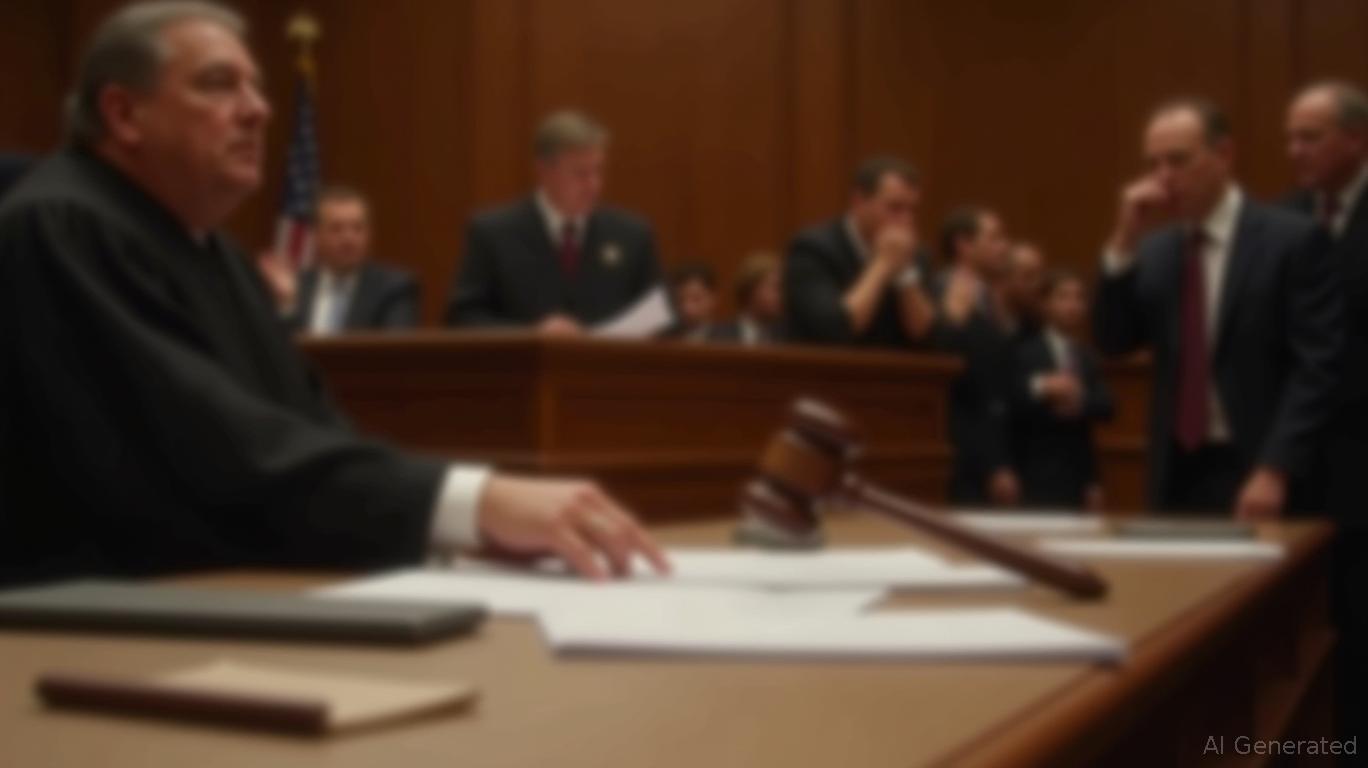Judicial Blocks to Anti-Union Policies Create Sector-Specific Risks and Opportunities in Federal Contracts
The Trump administration's aggressive push to curb federal labor rights has collided headfirst with the courts, creating a landscape of prolonged uncertainty for government contractors and
firms. Judicial injunctions blocking anti-union policies at agencies like TSA, , VA, and HHS are reshaping the calculus for investors in federal contracting equities. While the White House seeks to slash costs through workforce reductions, courts are issuing stays that preserve labor expenses—and operational stability—for contractors tied to agencies embroiled in litigation. This creates a clear divide between sectors to overweight and underweight in 2025.
The Judicial Freeze on Cost-Cutting
The most striking example is the U.S. District Court's preliminary injunction blocking the cancellation of TSA's union contract. This decision, upheld by a split appeals court ruling, has frozen workforce restructuring at the agency. Similar legal stays are now common across federal labor disputes, as courts demand “reasoned explanations” for policies perceived as retaliatory against unions. For contractors like CACI International (CACI) and Science Applications International Corporation (SAIC), which depend on TSA and DHS contracts, this means stable demand for services that rely on a unionized workforce.
Meanwhile, agencies like the VA and HHS face parallel challenges. A federal judge's temporary restraining order against mass terminations at NIH-funded projects (e.g., Thermo Fisher Scientific (TMO) and Charles River Laboratories (CRL)) highlights how judicial stays are delaying workforce cuts. These rulings not only protect labor costs but also reduce the risk of operational disruptions for contractors tied to agency-funded programs.
Sector-Specific Opportunities
Investors should overweight equities with federal contracts insulated by judicial stays. Key beneficiaries include:
Healthcare and Research Contractors
Firms like IQVIA (IQV) and Charles River (CRL), which support NIH and HHS-funded research, benefit from injunctions blocking funding cuts. The March 2025 nationwide restraining order in Association of American Medical Colleges v. NIH halted $4 billion in proposed research cuts, preserving demand for lab services and clinical trials.Veterans Affairs Vendors
Contractors such as Henry Schein (HSIC) and LHC Group (LHCG), which supply medical devices and home healthcare to the VA, gain stability from rulings blocking workforce reductions. VA Secretary Doug Collins' aggressive push to enforce accountability laws has been tempered by courts, reducing the risk of sudden service cuts.Cybersecurity and IT Firms
Agencies like TSA and DHS are under pressure to modernize systems without shrinking staff. Firms like Booz Allen Hamilton (BAH) and Leidos (LDOS), which handle IT upgrades for these agencies, see sustained demand as judicial stays delay cost-saving layoffs.
Risks for Cost-Cutting Plays
Conversely, investors should underweight companies reliant on workforce reduction policies. Key risks include:
- DOGE Contractors: Elon Musk's controversial “Department of Government Efficiency” (DOGE) initiative, which seeks to slash federal spending, faces lawsuits over transparency and data access. Firms like Oracle (ORCL) and Cerner (CERN), tied to the VA's problematic EHRM project, face heightened scrutiny. A preliminary injunction in New York v. Trump already blocked DOGE's access to Treasury systems, slowing cost-cutting efforts.
- Labor Arbitrage Plays: Firms like Black & Veatch (privately held) and AECOM (ACM), which bid on federal projects with low-labor-cost models, face headwinds as courts preserve unionized workforces.
Investment Strategy: Play the Stay, Avoid the Cut
The takeaway is clear: litigation is acting as a fiscal drag on anti-union policies, buying time for contractors dependent on stable federal budgets. Investors should:
- Overweight ETFs like the SPDR S&P 1500 Defense ETF (XAR), which tracks aerospace and defense firms with TSA/DHS ties.
- Target stocks with VA/HHS exposure, such as Henry Schein (HSIC) (+15% YTD in federal contracts) and IQVIA (IQV), which reported 8% revenue growth from NIH-funded projects in Q1 2025.
- Underweight any equity linked to DOGE or agencies pursuing workforce reductions without judicial safeguards.
The judicial pushback against executive overreach isn't just about labor rights—it's a structural tailwind for contractors insulated by legal stays. For 2025, the winning strategy is to bet on firms whose contracts are frozen in place by the courts.
Disclosure: This analysis does not constitute financial advice. Consult a licensed professional before making investment decisions.

Comments
No comments yet